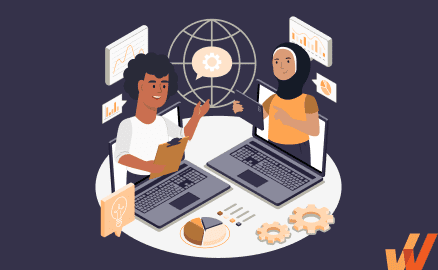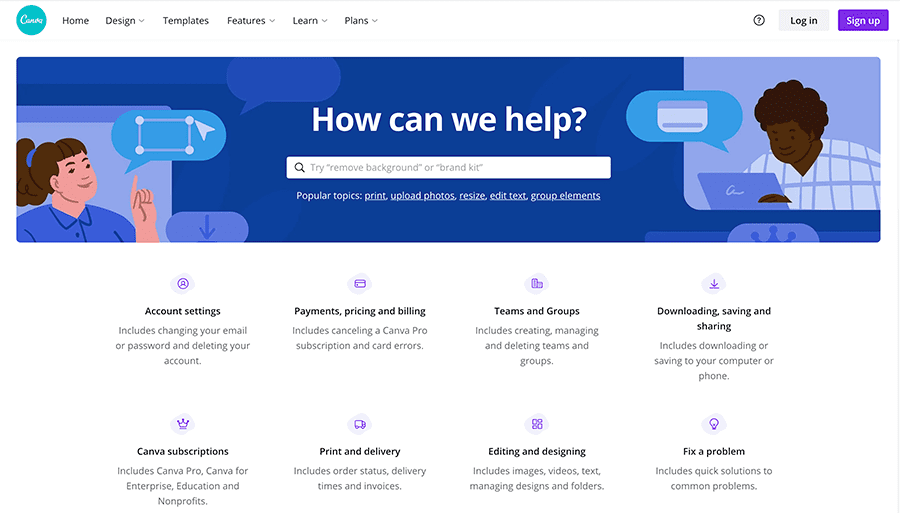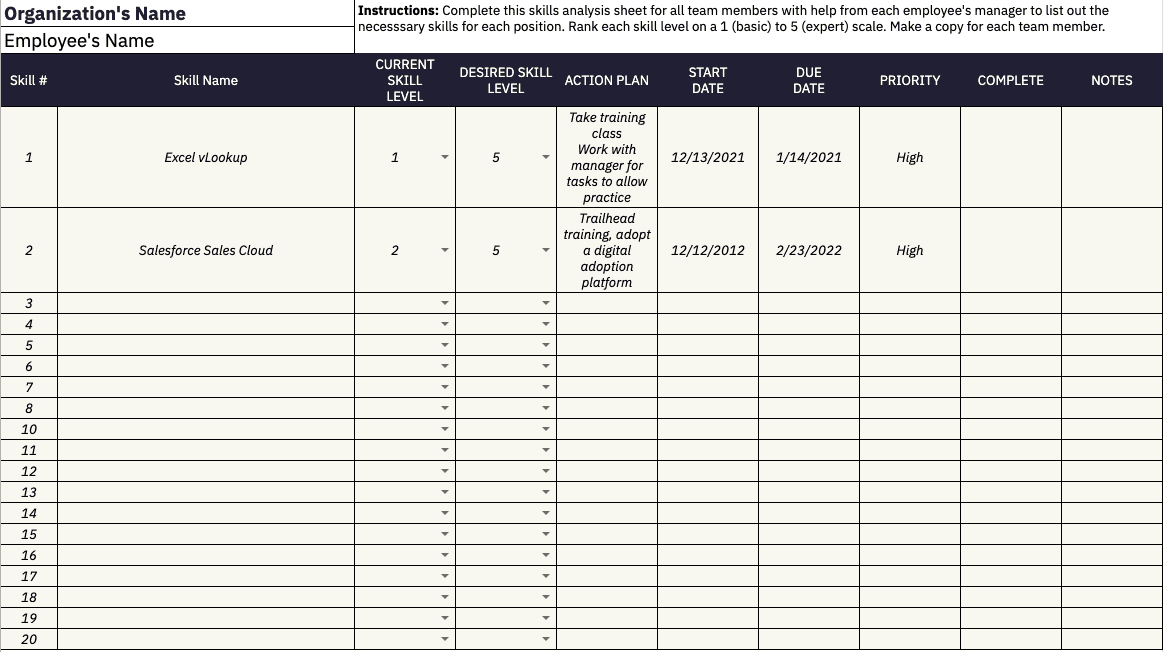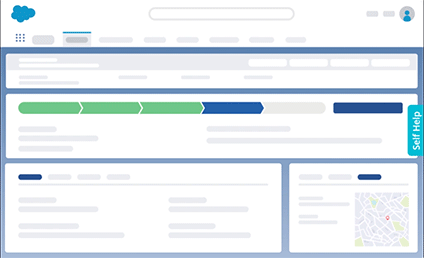
Samantha Rohn


In an era where customer service is a defining factor for business success, many companies still treat it as an afterthought.
Limited call center availability or a basic FAQ page on a website are often deemed sufficient, with the primary focus being on customer acquisition.
However, neglecting customer support leads to a lack of care for the individuals who keep businesses afloat. If customers experience challenges or inconveniences when trying to connect with a brand or support teams lack the necessary resources to address their concerns, they may be inclined to seek out other options.
Modern customer service extends beyond issue resolution; it has become a critical component of attracting and retaining customers. Great customer service fosters brand trust, with 38% of customers stating that it significantly impacts their trust in a brand they regularly engage with.
To deliver outstanding customer service, companies must ensure their support teams are well-prepared to address a wide range of questions and issues. This begins with a robust customer service training plan that equips team members with the necessary skills and knowledge.
Even with the best product or service, mistakes or miscommunications happen. A new user is unsure how to use a new software tool, a customer receives a defective product, has a question about something they just bought, a shipment gets lost in the mail, or they’re charged for the wrong item. As customers ourselves, we’ve all been there.
Regardless of how big or small that issue is, it’s the customer service team’s job to resolve it. If done correctly and efficiently, they can smooth even the biggest problems—but the reverse is also true.
If the process is complicated, inconvenient, or frustrating for the customer, even the slightest problems can drive a once-loyal buyer away for good.
This is where customer service training becomes so important. When your support team is properly trained, they can:
Customer service training is paramount as it plays a vital role in enabling employees to deliver a better customer experience. Well-trained customer service agents possess the necessary skills, knowledge, and attributes to provide exemplary support, turning ordinary interactions into extraordinary moments for customers.
Effective training equips customer service agents with exceptional communication skills, empowering them to engage with customers empathetically and attentively. By actively listening to customer concerns and inquiries, agents can offer personalized solutions that resonate with each individual. This personalized approach not only addresses customers’ needs efficiently, but also creates a positive emotional connection, leaving a lasting impression.
Customer service training holds immense importance in streamlining support processes and shortening resolution times. When support agents lack adequate training, they may struggle to find immediate answers to customer queries, leading to delays and potential frustrations for customers. Without the necessary knowledge and skills, agents might have to transfer the customer to someone else on the team, causing unnecessary handoffs and extended wait times.
By investing in comprehensive training programs, organizations equip their support agents with the expertise to swiftly and efficiently address customer issues. Well-trained agents can confidently navigate a wide range of inquiries, access relevant information promptly, and provide accurate solutions in a timely manner. This enhances the overall customer experience and reinforces the organization’s reputation for responsiveness and customer-centricity.
Retaining customers is essential for the long-term success of any business, and customer service training plays a pivotal role in achieving this objective. Poor customer experiences can result in significant revenue losses, with up to 9.5% of annual revenue at stake.
By providing comprehensive training, organizations equip their support staff to overcome customer experience challenges effectively, preventing customer defections to competitors due to a perceived lack of care and attention.
With the right training, support staff can deliver exceptional customer experiences that foster loyalty and trust. Well-trained agents possess the skills to address customer needs proactively and resolve issues promptly, leaving customers satisfied and more likely to continue their relationship with the company.
Organizations can show their dedication to providing exceptional support by investing in customer service training. This not only helps to keep current customers, but also encourages them to spread the word about the business through positive recommendations and referrals.
Customer service training goes beyond imparting knowledge—it instills confidence in customer service reps, making them feel capable of handling various customer interactions.
Well-trained agents have the knowledge and skills to navigate complex customer queries, handle challenging situations with composure, and provide swift resolutions. This increased confidence leads to better customer interactions and fosters a sense of pride and ownership in their roles.
When customer service reps feel confident in their abilities, they’re more likely to take initiative, provide proactive assistance, and take ownership of customer issues. This proactive approach improves customer satisfaction and streamlines support operations, leading to greater efficiency and reduced escalations.
Customer service training plays a crucial role in driving customer referrals, which have become a powerful form of word-of-mouth marketing in today’s digital era. As online reviews, digital forums, and social media platforms continue to expand, referral networks extend beyond “friends and family,” making positive customer experiences even more impactful in influencing potential buyers.
Well-trained customer service agents deliver exceptional experiences, making customers satisfied and more inclined to share their positive interactions with others. Customers who receive attentive and personalized support are more likely to become brand advocates, enthusiastically recommending the business to their communities.
This word-of-mouth marketing not only boosts brand visibility but also builds trust and credibility, as potential customers are more likely to trust the recommendations of their peers over traditional advertising.
Customer service training is essential in helping reps stay informed about changing customer needs and preferences. Regular training updates empower employees to remain current with product updates, industry trends, and customer expectations. This adaptability ensures that your organization can respond effectively to evolving customer demands.
Adapting to changing customer needs is crucial for staying competitive and relevant in a dynamic market. Companies that prioritize customer service training can identify emerging trends and adjust their approaches accordingly. By being agile and responsive, companies can deliver personalized and customer-centric experiences that resonate with their audience.
Strong customer service training can contribute to a positive company culture centered on customer satisfaction. When employees feel supported and valued, they’re more likely to take pride in their work and in representing your organization.
A positive company culture promotes teamwork, collaboration, and a shared commitment to providing exceptional customer service.
A customer-focused company culture extends beyond the customer service department and resonates throughout the entire organization. When employees at all levels recognize the importance of customer satisfaction, they can align their efforts to support this common goal.
This alignment leads to improved cross-functional collaboration, enabling teams to work together seamlessly to address customer needs and deliver cohesive and consistent experiences.
Customer service training isn’t a one-and-done task. It’s an ongoing process that requires individuals and the team as a whole to consistently revisit the tools, methods, and strategies they’re using to provide support to customers. This can only be done when a robust learning and development strategy is implemented.
Here are some of the most important times to provide customer service training.
No matter how much customer service experience a new hire has, proper training during the employee onboarding process is crucial for setting them up for success in their new role. New hires not only need practice in how to use the tools or systems your company utilizes, but they also need to know the ins and outs of your products and services. A proper onboarding plan can ensure they can provide excellent customer service from Day 1.
Great customer service meets the customer where they are, meaning it needs to constantly evolve to match changing expectations. Customer support teams need to be continuously upskilled in the new technologies, methods of communication, and even language and tone customers expect today.
Refining internal processes and procedures helps your team stay productive and efficient. With each change, you need to update your customer service training manual, train your team on the new way of doing things, and create proper process documentation to support their performance.
The truth is training is never-ending. Teams always have something to learn to improve their skills, and practice makes perfect. Continuous training programs can act as a refresher on past lessons or help them refine their work to do better at their job.
There are many different training methods for customer service training, and they each have unique benefits and drawbacks, meaning there isn’t a one-size-fits-all approach to training your customer service team.
A comprehensive training program can use a mix of methods to ensure all their bases are covered.
Here are four of the most common types of customer service training:
Instructor-led training follows a traditional classroom-like approach to learning. A teacher (usually a third-party consultant or a leader within the organization) will lead the group through new processes or information in person or virtually.
Instructor-led training often requires the most time commitment from trainees, requiring their attention during a dedicated time period. This kind of training is best for new hires or after significant process changes.
Online learning typically involves a list of modules or courses that the trainee can complete on their own time. Online learning is often pre-recorded or uses digital testing services to measure the trainee’s knowledge.
Online learning is great for continuous testing or training employees on updates or minor changes. It can also be used for learning new skills, as long as the employee is self-motivated and able to pick up knowledge without one-on-one attention.
Blended learning uses both instructor-led training and online learning to deliver a more comprehensive learning experience. Trainees might sit in on a live training session and then continue their training with online modules.
Blended learning provides the personalized attention of instructor-led training with the convenience of online learning, giving trainees the best of both worlds.
On-demand performance support provides teams with quick and easy access to training, resources, and knowledge during their day-to-day work activities.
On-demand performance support can help employees get unstuck if they forget how to do something or run into a problem they haven’t experienced before.
Providing comprehensive and effective training to customer service teams is crucial for organizations looking to thrive in today’s competitive business landscape. Well-trained customer service reps not only address customer needs, but also create positive brand experiences that drive loyalty and satisfaction.
Effective training goes beyond product knowledge and standard responses — it develops competencies and fosters a customer-centric mindset, leading to a workforce that consistently exceeds expectations and builds enduring relationships.
Here are the top five components of effective customer service training:
Effective communication is the core of exceptional customer service. Customer support agents must be adept at verbal and written communication to interact with customers professionally and empathetically. Verbal communication skills include:
Strong written communication skills are also essential for customer support agents. They must be able to articulate ideas clearly through email, live chat, or social media platforms. Writing with proper grammar, tone, and formatting is crucial to ensure effective and professional communication. Agents should be trained in adapting their writing style to suit different customer preferences or situations, whether it’s a formal business inquiry or a friendly support conversation.
Customer support reps need to develop a deep understanding of customers’ emotions, challenges, and frustrations. By putting themselves in the customers’ shoes, agents can create a supportive and empathetic environment that fosters trust and customer loyalty. Training in empathy helps reps acknowledge and validate customers’ feelings, respond with sensitivity, and provide personalized solutions that address their unique concerns.
Emotional intelligence goes hand in hand with empathy. It involves recognizing and managing one’s own emotions as well as understanding and empathizing with the emotions of others. Customer support reps with high emotional intelligence can navigate challenging situations calmly and defuse conflicts effectively. Training programs should focus on enhancing emotional intelligence by teaching agents self-awareness, self-regulation, social awareness, and relationship management skills.
Customer support reps often deal with complex and unique customer issues that require quick thinking and problem-solving abilities. Training should empower agents with problem-solving frameworks, analytical skills, and critical thinking techniques to diagnose and address customer problems efficiently. Customer support reps should learn to identify root causes, brainstorm solutions, and implement effective problem-solving strategies.
Conflict resolution skills are equally important for customer support reps. They should be trained to de-escalate tense situations, manage customer complaints, and find mutually beneficial resolutions. Conflict resolution training teaches agents active listening, empathy, negotiation, and diplomacy. Agents should be able to navigate difficult conversations, diffuse customer frustration, and turn potentially negative experiences into positive ones.
Customer support reps should have a deep understanding of the products or services they represent. Comprehensive product and service knowledge empowers agents to provide accurate information, answer customer inquiries, and troubleshoot effectively, so training programs should cover product features, functionalities, common issues, and troubleshooting techniques.
Customer support reps should also be trained to stay up-to-date with product updates, new releases, and industry trends. This ensures they can provide the most relevant and timely support to customers. Encouraging continuous learning and providing access to knowledge bases, FAQs, and product documentation equips reps with the necessary resources to resolve customer queries promptly.
Time management and multitasking abilities are crucial skills for customer service reps juggling multiple customer interactions and tasks simultaneously. Effective time management enables reps to prioritize their workload, meet deadlines, and provide prompt and efficient customer service.
One aspect of time management training involves teaching agents how to prioritize tasks based on urgency and importance. Agents should learn techniques like creating to-do lists, using productivity tools, and setting realistic goals to manage their time effectively. By understanding the value of time and allocating it efficiently, agents can ensure that customer requests are handled promptly, minimizing wait times and enhancing overall customer satisfaction.
Multitasking is another essential skill that customer service agents need to master. They should be trained to handle concurrent customer inquiries or tasks without compromising the quality of their service. Multitasking training focuses on strategies for organizing work, managing interruptions, and switching between tasks seamlessly. Agents learn to maintain focus and attention on each customer interaction while managing their workflow efficiently.
Time management and multitasking training should emphasize the importance of balancing speed and quality. Customer service reps should be encouraged to work efficiently without sacrificing the thoroughness and accuracy of their support. By optimizing their time management and multitasking abilities, customer service reps can handle a higher volume of customer inquiries, minimize response times, and enhance the overall productivity and effectiveness of the support team.
Employees can be resistant to training because it’s often boring—but it doesn’t have to be. Getting creative with how you train your customer service team can help them stay engaged with the new information and retain more of what they’ve learned.
Here are some ideas and tips for training your customer service team in 2024.
Your customer service agents need experience handling a variety of customers, situations, and questions—but you don’t want to wait until those issues find them naturally to learn if they’re equipped to handle it. Instead, create role-playing scenarios where agents can learn how to handle difficult situations in a low-pressure environment.
Watching someone else complete a task is a great way to learn. Pair new hires with experienced employees (or team members set for a promotion with someone currently in that role) so they can see how customer service situations play out in real-time—and give them the added benefit of a built-in mentor for the day.
A buddy program encourages collaboration and knowledge sharing, and can help new hires feel more comfortable in their new position. Establish pairs or groups of new hires and set a designated time for them to get together and talk about or practice what they’ve learned during the training process.
A knowledge base gives your team something to refer back to when they have a question or hit a roadblock. A well-designed knowledge base or internal wiki can make it easy for customer service agents to find the solutions they need if they’re ever in a situation where they don’t know the correct answer.

Get employees engaged in continuous learning by offering incentives for completing courses or certifications. Recognize their hard work by offering something they want (such as a promotion or monetary bonus).
Although we hope to never experience a crisis, it’s crucial to ensure that teams are adequately prepared in case one does occur. Crisis training not only helps your team know what to say to customers when something goes seriously wrong, but can also help them handle the added stress or pressure that comes with working in a time of crisis.
Presentations can provide an in-depth look at a particular method, experience, or tool, and allow your team to ask questions or share ideas. Encouraging team members to present topics to their peers can also create a collaborative environment for more efficient learning.
“Moment of need” training provides specific support to employees based on their situation or circumstance, giving them exactly what they need when they need it. This kind of learning model works with an employee’s busy schedule and short attention span to make training delivery more effective.
With a digital adoption platform like Whatfix, customer support teams are empowered with in-app guidance, reinforcement training, and on-demand support – all in the moment of need. This empowers support agents to provide better levels of support and self-help support channels for customers that offer a better level of support and deflects tickets.
A skills gap analysis can help you see what skills and weaknesses exist in your team or individual employees. When you know where you can improve, you can provide more targeted training to help bring everyone up to speed.

✓ Thank you, the checklist will be sent to your email
Monotonous training can get boring and cause your team to check out. Try and mix up your training methods to keep things interesting. If there is a particular method or approach you haven’t tried with your team, give it a try during your next training session.
Breaking down lessons into small sessions can make it easier for your team to stay focused and engaged, increasing their chances of retaining the information. Microlearning breaks concepts down into bite-size chunks that your service team can complete between meetings.
It’s not good enough to just have process documentation—the instructions need to be clear, up-to-date, and easy to follow. If your customer service team is struggling, it might be time to update your standard operating procedures (SOPs).
Having a team member or manager jump on a video call to walk an employee through a process is acceptable – in moderation. However, with larger teams that are distributed across the globe, it’s difficult to find the time to connect that works for both individuals.
Loom is a video tutorial creation tool that allows users to record their screen, as well as their camera and microphone, allowing them to create short walkthrough videos that document nuanced or complex digital processes.
Larger organizations can use a digital adoption platform such as Whatfix to create in-app, interactive training content that is contextual to your different customer service and support agents.
With Whatfix, you can create the following in-app training content:

Make ongoing training fun by gamifying the experience. Can you create some healthy competition among team members? Adding some excitement can get the entire team more involved in the training process.
Knowing how to answer questions correctly or walk a customer through how to complete a task or troubleshoot a problem is great, but customer service agents need to know how to handle frustrated, unhappy, and sometimes downright mean customers. Conduct conflict-resolution training, such as role-playing exercises, to educate employees on handling tense situations.
Your customer service team needs to be experts in your product. Beyond training for the typical customer service skills, make sure they’re familiar with the product or services you provide—including any updates or changes. Be sure to include product knowledge training in all of your new onboarding training, as well as frequent refresher training sessions.
Customer service agents must be great listeners, empathetic, clear communicators, and know how to stay positive in stressful situations. While soft skills are harder to learn, have your team engage in exercises that allow them to practice their professionalism and patience.
A demonstration session or walk-through is a great way for your team to see your product or the tools they’re using in action. You could host these live and allow your team to come with questions to answer in real-time, or pre-record demonstrations they can access on their own time.
One-on-one learning can be incredibly impactful for both new and existing employees. Setting up a mentor program for your customer service team gives each individual a go-to resource to ask questions, get feedback, and engage on a more personal level.
The LAST (Listen, Acknowledge, Solve, Thank) method is an easy-to-follow framework for resolving customer issues. This support method ensures all the bases are covered when a service agent is helping an unhappy customer.
Company culture goes hand-in-hand with team success. If your team isn’t happy with their job, they’re not likely to care about the service they’re providing. Creating a strong company culture can improve employee satisfaction and encourage them to want to do better at their job.
A customer experience simulation puts your support agent on the other end of the conversation, allowing them to see what the support experience is like from the customer’s perspective. Knowing what the customer is going through can help them empathize and provide an overall better experience.
Give your team a say in the way you train. Ask for their opinions on past courses or lessons and find out what they’d like to learn in future courses. Getting them involved in the training process can make them more invested and show them you care about their professional growth.
Understanding how well customer service training programs are performing empowers organizations to assess the level of skill development, employee engagement, and the overall impact on customer satisfaction. By tracking relevant KPIs, you can identify strengths and areas for improvement, and take proactive measures to enhance training effectiveness.
In this section, we’ll explore the most important KPIs your company should track to measure the success of your customer service training programs.
Measuring the average response time is a way to determine how long it takes for a customer support agent to reply to a customer inquiry or request. This tracking method allows organizations to assess how well their agents are trained to assist customers promptly. It helps measure the efficiency and effectiveness of the training.
Customer satisfaction score (CSAT) quantifies customer satisfaction based on post-interaction surveys or feedback. It directly measures how well customer service reps are meeting customer expectations and addressing their needs. By tracking CSAT scores before and after training, your company can gauge the impact of training.
First call resolution (FCR) rate is the percentage of customer issues that are resolved during the initial contact with a customer support agent. A high FCR rate indicates that the support agent’s training has provided them with the knowledge and skills required to effectively address customer needs, reducing the need for further interactions and increasing customer satisfaction.
Customer retention rate measures the percentage of customers who continue doing business with the organization over a period. By tracking customer retention, organizations can assess whether the training has positively influenced customer loyalty and the overall customer experience.
Net promoter score (NPS) measures the likelihood of customers to recommend your company’s products or services to others. By surveying customers and calculating your NPS, your organization can gauge the overall satisfaction and loyalty of your customer base. Tracking NPS before and after training provides insights into the impact of training on customer advocacy and brand loyalty.
Customer effort score (CES) measures the ease of doing business with a company from the customer’s perspective. It assesses how much effort customers need to put into resolving issues or receiving support. Monitoring CES can help you understand the impact of training on reducing customer effort and enhancing the overall customer experience.
Customer churn rate measures the percentage of customers who discontinue their relationship with a company over a specific period. A decrease in churn rate indicates that the training has improved customer satisfaction and loyalty. By tracking churn rate, your company can evaluate whether the training has had a positive impact on customer retention and loyalty.
The role of technology in customer service training has revolutionized traditional training methods, providing organizations with innovative tools and platforms to enhance the learning experience and drive better customer outcomes. Technology has transformed customer service training into a dynamic and interactive process that engages employees, accelerates learning, and equips them with the skills needed to deliver exceptional customer service.
The right customer support training software and technology can make customer service training easier and more effective. Here are the tools you’ll want to use when creating a training program:
A learning management system is a software platform instructors use to create, manage, and monitor training programs. An LMS makes it easy to deliver content and materials, track who is completing them, and provide progress reports on training initiatives.
Online course providers offer third-party training, courses, or lessons on specific skills or topics. These platforms make it easy for team members to learn something new with minimal investment from the organization.
A knowledge base or internal wiki is a set of company guides, documents, updates, and databases available to all employees. Employees can easily share, collaborate, and access information they need whenever needed.
A digital adoption platform integrates with another application to guide the user through how to use it. Add walk-throughs, videos, self-help menus, and more to provide (digital) hands-on support. A DAP enables end-users to find answers with in-app self-help. It also provides performance support to customer service reps to quickly find the best practices, processes, procedures, and more when dealing with customer service issues.

The role of technology in customer service training has become indispensable for organizations that want to provide an exceptional customer experience. With the help of online training platforms, interactive learning tools, real-time feedback, and access to extensive training resources, technology has transformed traditional training methods and empowered employees to excel in their customer service roles.
With the ever-evolving digital landscape, organizations need a comprehensive solution to leverage the benefits of technology-driven customer service training. That’s where Whatfix comes in. As a leading provider of digital adoption platforms (DAP), Whatfix offers a powerful solution that revolutionizes how organizations train their customer service teams.
With Whatfix, customer service and support teams are empowered with in-app guidance like product tours, walkthroughs, and task lists on core customer service and help desk tools, helping them to adopt best practices and processes with their customer support tools.
With Self Help, customer support agents are provided with a self-help wiki that automatically crawls their knowledge repositories and helps them find the right documentation without asking for assistance.
With Whatfix, organizations can unlock the full potential of their customer service training programs. With its user-friendly interface, robust features, and seamless integration, Whatfix is the ideal solution to enhance employee performance, boost customer satisfaction, and drive business success.
Take the next step toward transforming your customer service training with Whatfix. Request a demo or start your free trial today.

Thank you for subscribing!